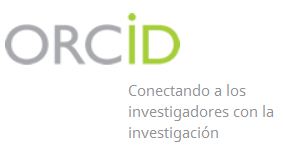Biostatistics Teaching in COVID-19 Times: from Face-to-Face to Virtuality
Keywords:
Biostatistics specialty, COVID-19, virtual modality, teaching-learning process.Abstract
Introduction: The training of specialists in Biostatistics has a high social relevance. Their competences include to guarantee the quality of data for analysis and scientific decision making in health. During the COVID-19 confinement, the residence did not stop and it was necessary to adapt the syllabuses of the modules to the virtual modality.
Objective: To describe the situation of the training of specialists in Biostatistics at Escuela Nacional de Salud Pública during 2020 and 2021, as well as its adaptation from face-to-face to the virtual modality.
Methods: A research was conducted regarding health policies and systems of the technological development type, with a mixed approach, in Escuela Nacional de Salud Pública during 2020 and 2021. Five editions of the specialty were studied, from 2017 to 2021; as well as the variables objectives, contents, teaching-learning methods, teaching aids and evaluative system. To obtain information, a documentary review was carried out and three experts were consulted.
Results: Ten modules were adapted to virtuality. There were others that, due to their complexity, were adapted to the mixed form. The methods, the teaching aids system and evaluation were the components of the teaching-learning process on which the greatest number of changes had an impact.
Conclusions: The training of specialists in Biostatistics has had satisfactory results in recent years. The virtual modality, in the current university context, is a necessity to keep up with the scientific-technical development of mankind.
Downloads
Downloads
Published
How to Cite
Issue
Section
License
Los autores conservan todos los derechos sobre sus obras, las cuales pueden reproducir y distribuir siempre y cuando citen la fuente primaria de publicación.
La revista se encuentra sujeta bajo la Licencia Creative Commons Atribución-No Comercial 4.0 Internacional (CC BY-NC 4.0) y sigue el modelo de publicación de SciELO Publishing Schema (SciELO PS) para la publicación en formato XML.
Usted es libre de:
- Compartir — copiar y redistribuir el material en cualquier medio o formato
- Adaptar — remezclar, transformar y construir a partir del material.
La licencia no puede revocar estas libertades en tanto usted siga los términos de la licencia
Bajo los siguientes términos:
- Atribución — Usted debe dar crédito de manera adecuada, brindar un enlace a la licencia, e indicar si se han realizado cambios. Puede hacerlo en cualquier forma razonable, pero no de forma tal que sugiera que usted o su uso tienen el apoyo de la licenciante.
- No Comercial — Usted no puede hacer uso del material con propósitos comerciales.
- No hay restricciones adicionales — No puede aplicar términos legales ni medidas tecnológicas que restrinjan legalmente a otras a hacer cualquier uso permitido por la licencia.
Avisos:
- No tiene que cumplir con la licencia para elementos del material en el dominio público o cuando su uso esté permitido por una excepción o limitación aplicable.
- No se dan garantías. La licencia podría no darle todos los permisos que necesita para el uso que tenga previsto. Por ejemplo, otros derechos como publicidad, privacidad, o derechos morales pueden limitar la forma en que utilice el material.


